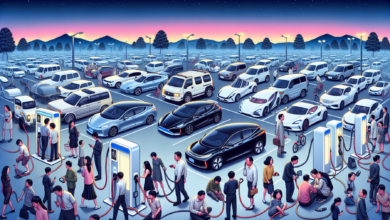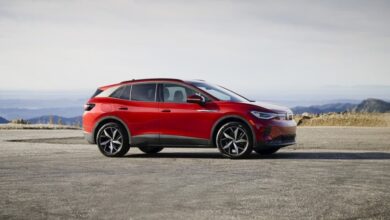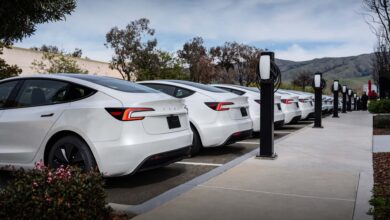GM demos its new Energy products by running a mansion off a Silverado EV
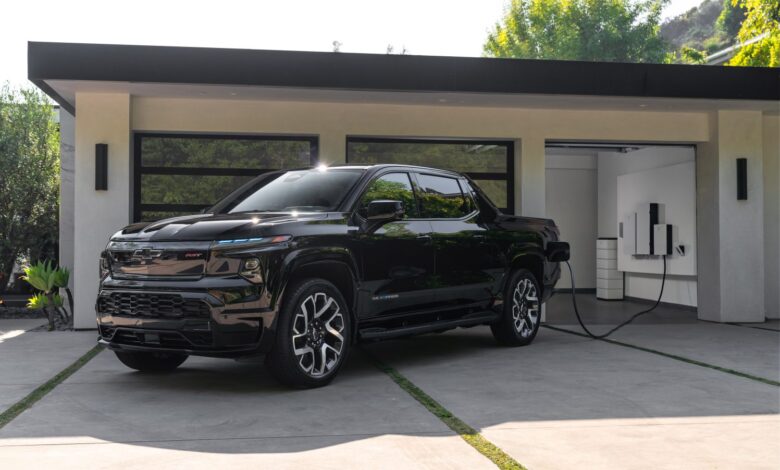
GM has a new suite of energy products that allow you to share power between your car and your home, and we got to see them in action.
GM invited us to a swanky house in Beverly Hills to demonstrate its new home energy products, including vehicle-to-home (V2H) backup power that allows you to power your house off of your EV battery.
These products include its new bidirectional EV charger, which it’s calling the GM Energy Powershift Charger ($1,699), and the GM Energy V2H Enablement Kit ($5,600) which comes with AC-DC inverter, Home Hub (the computer which manages loads through the house), and dark start battery (provides a small amount of power as the system starts up and shifts from home to vehicle power).
The systems can be bought separately or bundled together for $7,299. Installation is separate (and costs can vary widely), and GM has partnered with Qmerit, a national EV charging installation company, to make it easier for customers to find an installer.
GM set up its system and brought out two new Silverados to demonstrate both their vehicle-to-load (V2L) and V2H capabilities. One Silverado was connected to the outdoor speakers and screen running the presentation GM gave us on its products, and the other was connected to the house to show what happens when the V2H changes over from home to truck power.
To do so, GM flipped the main breaker for the house, then showed us the process of of the car taking over. It took around 35 seconds – much longer than other battery backup solutions, but quicker than sitting puzzled in the dark, stumbling to find a flashlight, going to the breaker box to flip switches uselessly and then concluding that you’ll be spending the rest of the night reading by candlelight.
But once the takeover happened, the whole party was being powered by the truck. The lights and music in the garage and throughout the house were powered by the truck, along with the kitchen where the hors d’oeuvres were being prepared.
The car is capable of putting out 9.6kW – enough to power most of your everyday needs, but not high simultaneous loads (i.e. don’t run the pool pump and the dryer at the same time as everything else), though all of this depends on how energy-hungry your house is. And the Silverado’s massive 200kWh battery pack can power an average American home for around 5-6 days. GM told us the system was powering about 60% of the 10,000 square-foot house the demonstration happened in.
GM says it is working to reduce the amount of time the switchover from grid to car power takes, but that it will inevitably be slower than home battery solutions (which can respond in only a couple seconds, or even less than a second) because those stay continually energized, whereas the car requires more communication and a wake-up process.
Speaking of home battery solutions, GM Energy also plans to sell one of those, though that unit won’t be for sale until later this year (same with solar integration, which will also come this year). Batteries will be available in 10, 17, and 35kWh packages. The systems are built with stacks of modular units, each 1.7kWh, so the packages come with either 6 or 10 stacked units.
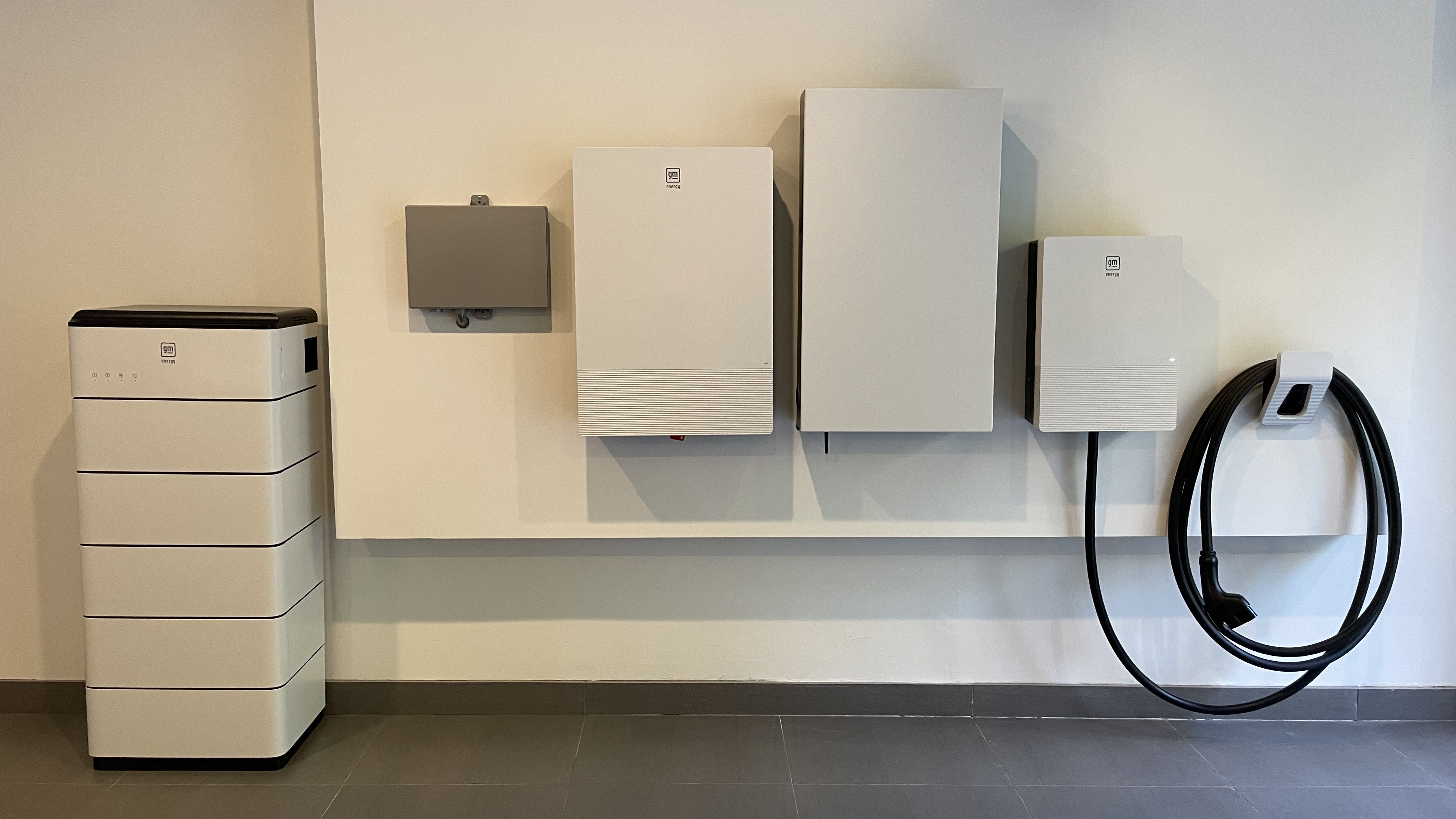
This battery backup solution will take “less than 5 seconds” to take over, though we think (or hope) that GM is being conservative with that. Competing home energy products like Tesla’s Powerwall can take over as quickly as around 200 milliseconds, and we’ve heard of others coming that might be even faster. But the battery wasn’t connected for the purposes of this demonstration.
GM wants to see this product rolled out in as many houses as possible, and in service of that, plans to have V2H support on all of it’s electric vehicles by 2026. It told us that these cars would all be capable of 9.6kW output, so you won’t need a 200kWh Silverado to power your house, you’ll also be able to do it with the $35k entry-level Equinox, or eventually with Chevy’s upcoming “Boltium” next-gen Bolt EV.
This is a contrast to most other EV makers – Hyundai and Kia have V2L on their vehicles, but only up to 1.8kW; Ford has its Intelligent Backup Power system, but only on the F-150 Lightning; Tesla has Powershare, but only on Cybertruck; Rivian wants to get around to offering bidirectional charging, but isn’t there yet – and so on. GM does seem more committed on this front than anyone else at this time.
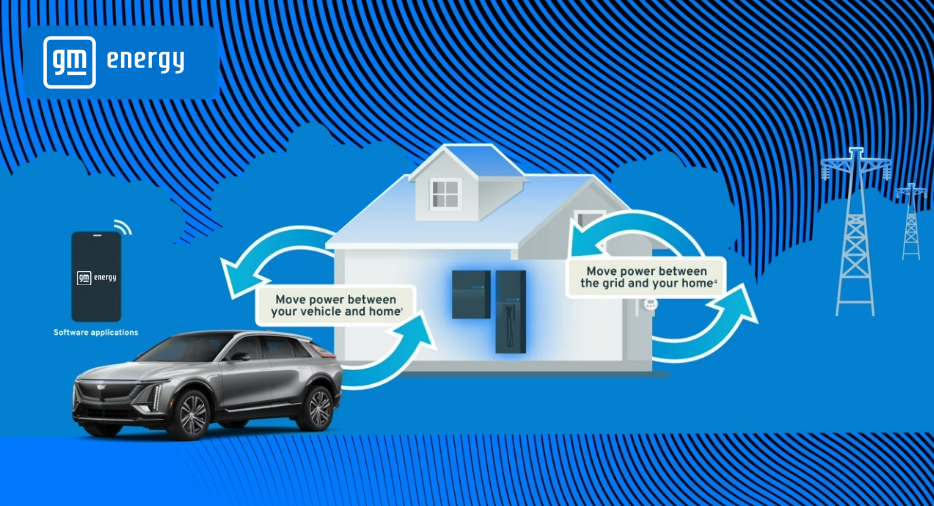
GM’s electric vehicles will be compatible with GM Energy’s products, though won’t be cross-compatible with other battery backup and bidirectional charging systems in the short term. Eventually there will be cross-compatibility, but first the ISO 15118 standard, which governs Plug & Charge & bi-directional/V2G communication, needs to be finalized, which is taking quite some time (read a little more about that here).
GM also plans to build a virtual power plant, as we’ve seen other energy services companies do, which aggregates the energy available from hundreds or thousands of customers and discharges it to the grid when needed. These can be quite lucrative for owners of battery backup systems, though GM hasn’t decided exactly how it will offer these products to its customers yet, and is exploring various financial possibilities to encourage usage.
That’s important, because the system isn’t cheap. As mentioned above, even without the battery, the whole thing costs $7,299 before installation (installation can be very costly – though that was an exceptional case). That’s quite steep just for the gimmick of being able to run your house off of your car, so offering incentives to make that more palatable will help increase uptake. It’s a bit more expensive than Ford’s competing V2H product, comparable to the cost of home generators, and cheaper than home battery backup systems.
But while it does seem a little gimmicky at first glance, the dream of widespread bidirectional power has been talked about among EV advocates for some time, and could solve a lot of energy issues.
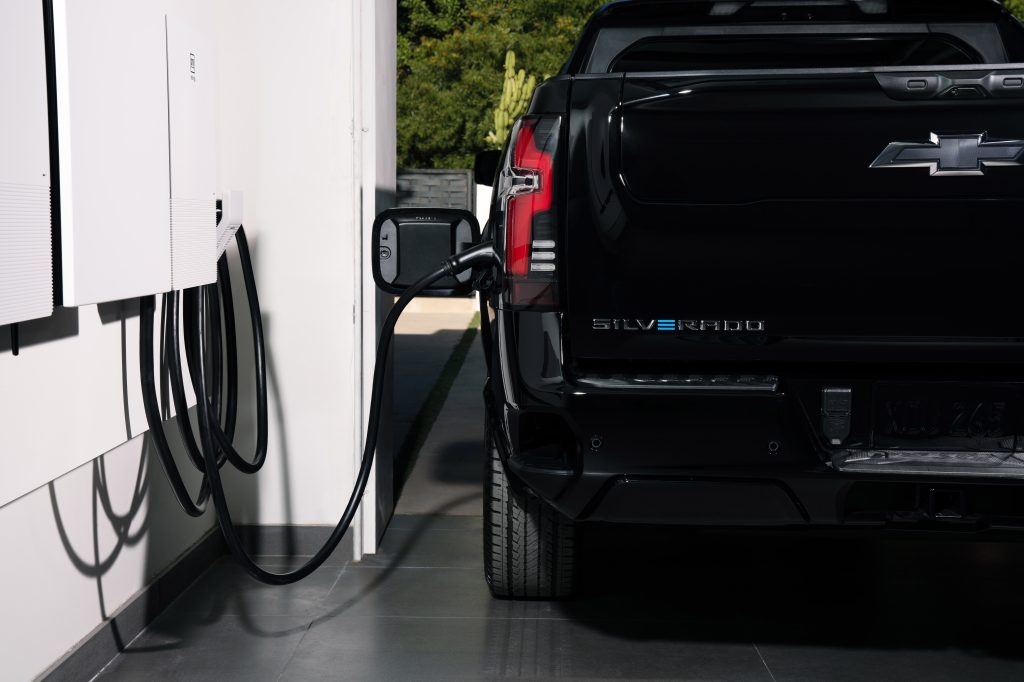
Even just V2H (which allows powering a home, but not feeding energy back into the grid – that’s V2G) can reduce loads when the grid is most stressed, and reduce energy costs for a home by allowing energy arbitrage, charging a battery at times when power is cheap and then running the house off of the battery when power is expensive and dirty. It leads to lower energy bills, and can help grid resiliency by having distributed battery backup in a large percentage of homes.
It’s an exciting possibility, but to get there, we need to get a lot of batteries in homes. And whether they’re stacked on the floor in the garage or parked and plugged in inside of it, GM’s ready to sell you those batteries (*car sometimes included).
You can find out more about GM’s home Energy products at its GM Energy website. At first, availability is limited to California, Florida, Michigan, New York and Texas, but GM plans to expand beyond those boundaries over time.
FTC: We use income earning auto affiliate links. More.

